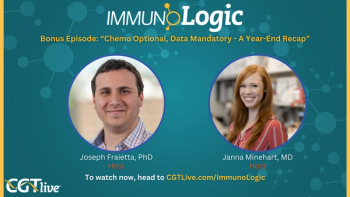
Anti-inflammatory drugs show promise to treat uveitis
Baltimore?Uveitis is a vision-threatening disease for which current therapy?namely, oral corticosteroids, antimetabolites, T-cell inhibitors, and alkylating agents?is not consistently effective. In addition, the side effects produced by these treatments are well known.
James P. Dunn, MD, discussed recent advances in the treatment of uveitis here at the Current Concepts in Ophthalmology meeting. The good news is that there are biologic anti-inflammatory drugs that are extremely promising.
Such is the case of infliximab (Remicade, Centocor Pharmaceuticals) for the treatment of Behcet's disease. The drug may facilitate early resolution of severe ocular disease but without the long-term side effects caused by corticosteroids.
"Cytokines track leukocytes to the site of immune reaction and up-regulate the inflammatory cascade," explained Dr. Dunn. He is associate professor of ophthalmology, Ocular Immunology Service, Johns Hopkins-Wilmer Eye Institute, Baltimore. "A number of cytokines have been identified, but their specific roles are not fully understood."
The cytokine that has received the most attention, he pointed out, is tumor necrosis factor (TNF)-alpha, an inflammatory cytokine that is released by activated monocytes, macrophages, and T lymphocytes.
"The role of TNF-alpha in ocular diseases is becoming better established and it appears to have a very important role in Behcet's disease," he said.
Some biologic anti-inflammatory drugs are TNF antagonists such as etanercept (Enbrel, Immunex Corp), infliximab, and adalimumab (Humira, Abbott Laboratories); interleukin-2 receptor antagonists; and lymphocyte antagonists, such as rituximab, which depletes CD20 B cells.
"The drugs have shown promising results in the treatment of uveitis associated with chronic juvenile rheumatoid arthritis," he said.
Dr. Dunn noted that there are case reports published about patients with peripheral ulcerative keratitis, scleritis, and chronic or recurrent uveitis that responded to biologic anti-inflammatory drugs after the disease did not respond to conventional therapy.
The downside to the use of biologic anti-inflammatory drugs is that they carry the potential for serious side effects that include infections (especially tuberculosis and other granulomatous diseases); malignancies; allergic reactions (these occur with greater frequency in the chimeric or non-fully humanized monoclonal antibodies) that include flu-like reactions, shortness of breath, and skin lesions; thrombosis; and demyelination diseases.
Natalizumab (Tysabri, Biogen Idec), for example, showed promise in the treatment of multiple sclerosis; however, some patients developed and died of progressive multifocal leukoencephalopathy with the result that the drug was pulled from the market.
Other disadvantages include the fact that some of the drugs have produced disappointing results in that they do not appear to induce long-term remission of the disease. Importantly, the dosing regimens have not been firmly established. The dosing for infliximab ranges from 3 to 8 mg/kg every 4 to 8 weeks.
Another consideration is that treatment of ocular inflammatory disease may necessitate administering higher doses than those needed to treat rheumatologic disease. To date there have been no results from controlled clinical trials published, Dr. Dunn noted.
On the practical side, the biologic anti-inflammatory drugs are extremely expensive and insurance companies are reluctant to cover the costs for diseases for which the drugs have not been approved, such as uveitis. Infliximab on average can cost about $2,400 for each infusion, and this treatment has to be repeated six to eight times annually.
Dr. Dunn told ophthalmologists to look for the results of a prospective study by Suhler and colleagues on the use of infliximab for refractory uveitis. Preliminary results, published earlier this year (Arch Ophthalmol 2005;123:903-912), showed that the treatment was usually effective but that the incidence of serious side effects was unexpectedly high.
Newsletter
Stay at the forefront of cutting-edge science with CGT—your direct line to expert insights, breakthrough data, and real-time coverage of the latest advancements in cell and gene therapy.





































